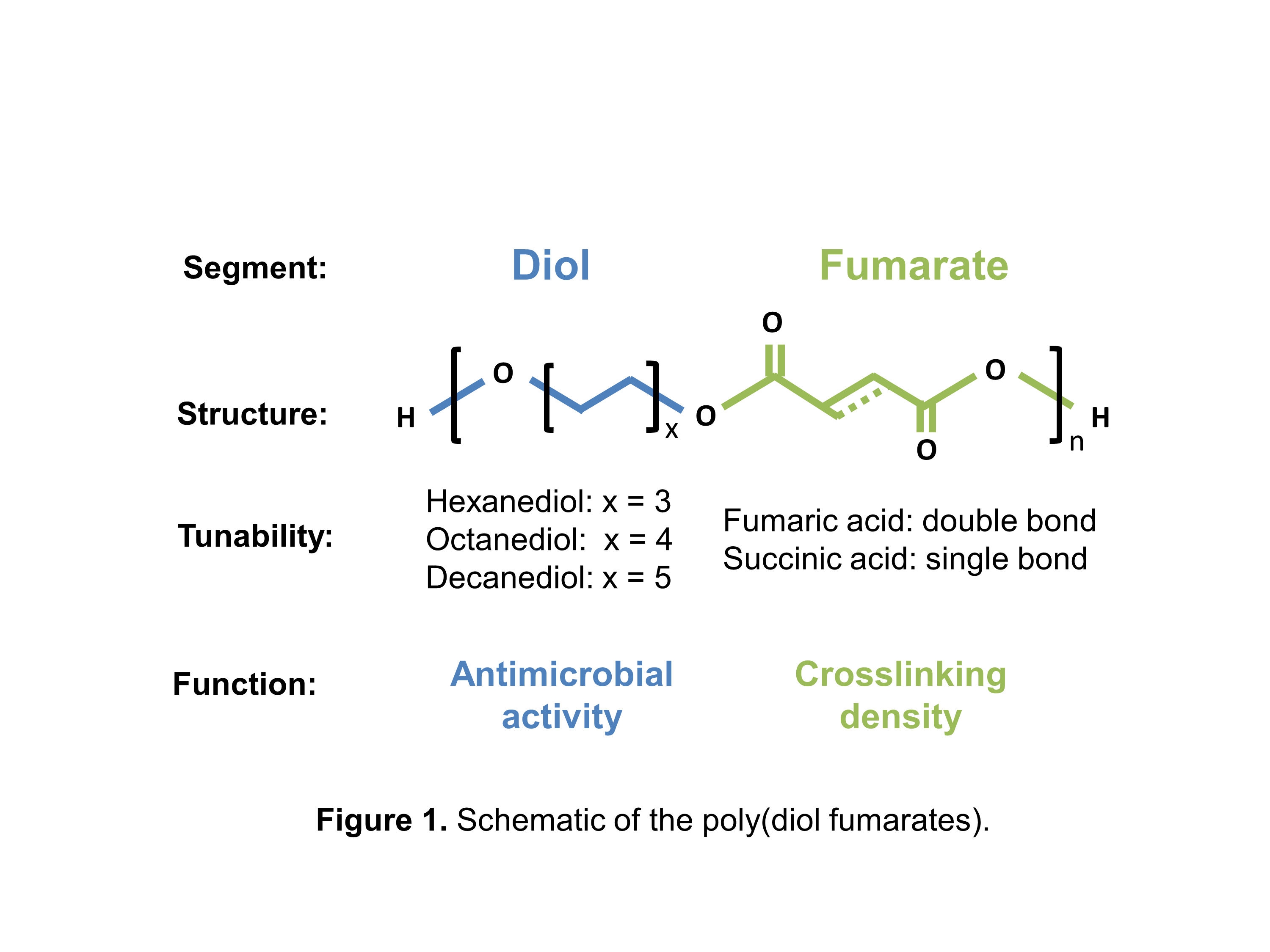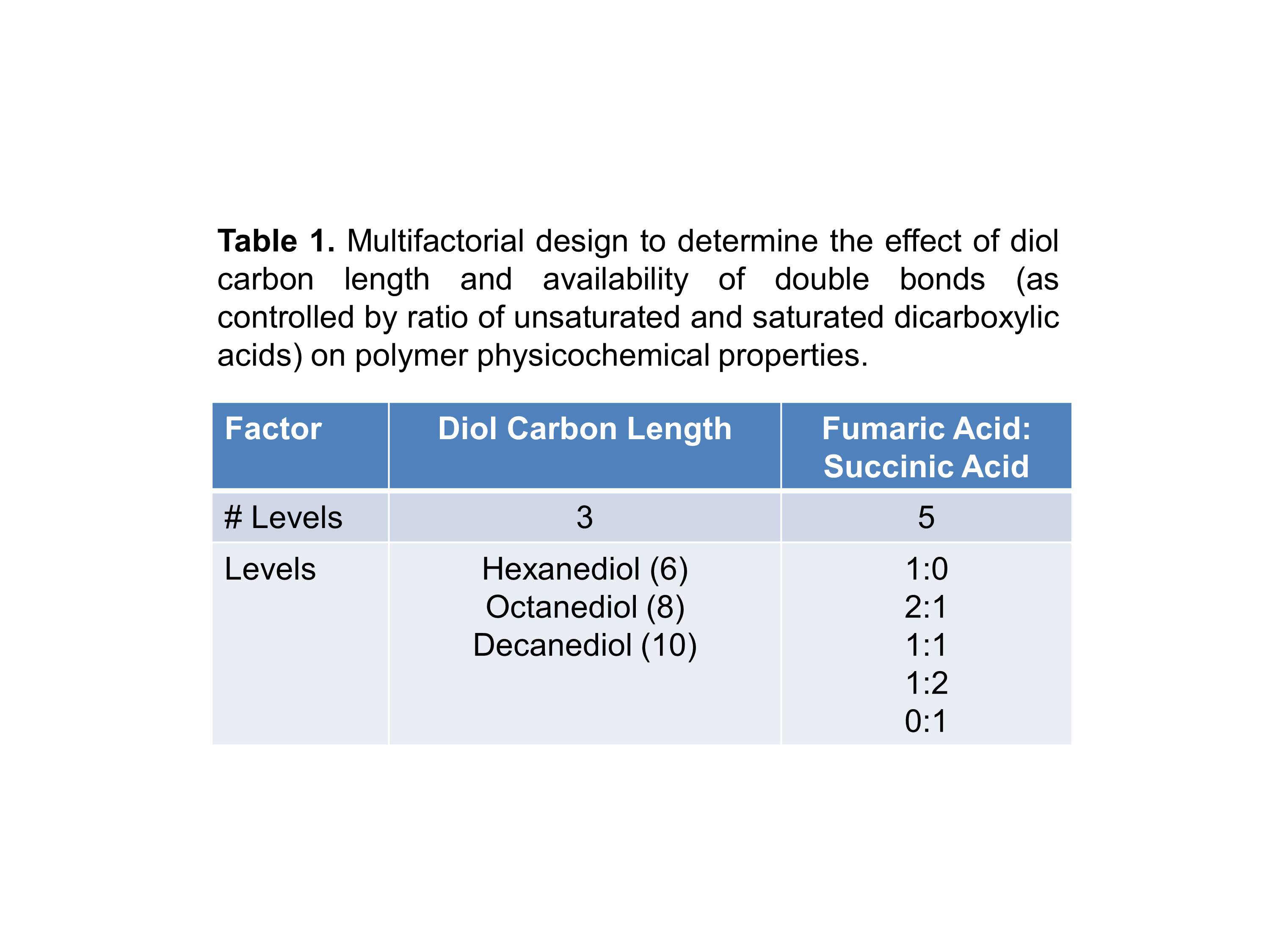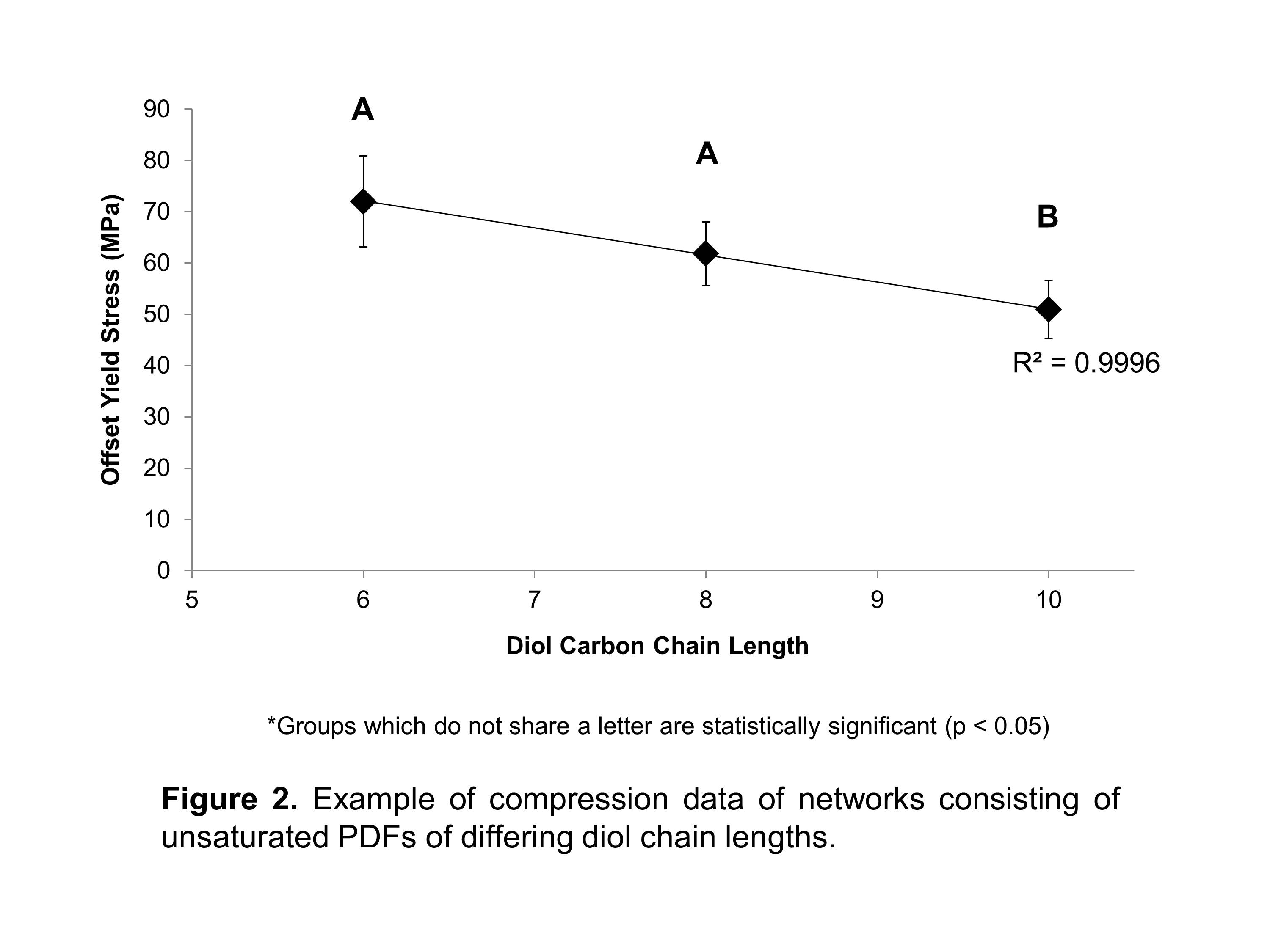Introduction: Due to the tremendous healthcare burden of device-related infections, novel biomaterials and strategies for prevention of pathogenic device colonization are warranted. There is in vitro and clinical evidence that diols, or carbon chains featuring two alcohol groups, have inherent antimicrobial properties[1],[2]. These molecules have been demonstrated to have a broad spectrum of efficiency, including inhibition of both bacterial and fungal pathogens[2]. This antimicrobial effect can be modulated by the length of the diol carbon chain[1].
Therefore, we have designed a novel class of diol-based, unsaturated, aliphatic polyesters that biodegrade into monomers capable of mitigating infection (Fig. 1). This new class of polymers, the poly(diol fumarates) (PDFs), can be crosslinked to form networks of scaffolds with antimicrobial degradation products. Both the diol carbon length as well as degree of available double bonds are tunable, resulting in a highly controllable class of antimicrobial polymers.
In this work, we first investigated the effects of diol carbon length on synthesis and polymer physicochemical properties. We next measured the effects of double bond density on PDF physicochemical properties. Lastly, PDFs were crosslinked into a network structure to create scaffolds that were evaluated for swelling and mechanical properties as a function of diol length and crosslinking density.

Materials and Methods: PDFs were synthesized by a condensation reaction between equimolar concentrations of diol (hexanediol, octanediol, or decanediol) and dicarboxylic acid (fumaric acid and/or succinic acid). A multifactorial design approach was taken to create 15 unique formulations of PDF (Table 1). The resulting polymers were characterized, based on altering diol carbon length and amount of double bonds, via proton-nuclear magnetic resonance spectroscopy, gel permeation chromatography, differential scanning calorimetry, and rheology to confirm synthesis, measure chain length, characterize transition temperatures, and evaluate polymer viscosities, respectively.

Scaffolds of crosslinked PDF networks were fabricated by mixing the polymers with crosslinker (n-vinyl-2-pyrrolidinone, 1:1 mass ratio) and photoinitiator (Irgacure 819, 0.3 wt%)[3]. The effects of different diols and availability of double bonds on the resulting Fourier Transform Infrared spectra, swelling ratios, and compressive properties of these networks were measured as previously described[3]. For compressive testing, a mixture of PDF, crosslinker, and photoiniator was poured into cylindrical molds (3 mm in diameter, 6 mm in height), exposed to blue light for 160 seconds to initiate crosslinking, and then compressed at a crosshead speed of 1 mm/min[3].
Results and Discussion: The PDFs were successfully synthesized from a variety of diols with different densities of double bonds, dependent on the ratio of fumaric acid to succinic acid. Analysis is ongoing, but preliminary data indicate significant differences in physicochemical properties of polymers and networks formed by PDFs (Fig. 2).

Conclusion: PDFs are a new class of biodegradable unsaturated aliphatic polyesters. Different PDFs can be synthesized with a variety of diols and tunable physicochemical properties. Due to its flexibility, this new class of polymers has potential for a variety of anti-infection applications.
Barrow Scholars Program; Armed Forces Institute of Regenerative Medicine II (Award No. W81XWH-14-2-0004); John S. Dunn Foundation; Baylor College of Medicine Medical Scientist Training Program (NIH T32 GM007330); Frances King Black Endowment for Cancer Research
References:
[1] Akedo et al., Journal of Food Science, 1977, 42, 699-701.
[2] Falk et al., Acta Dermato-venereologica, 2006, 84, 372-373.
[3] Fisher et al., Biomacromolecules, 2003, 4, 1327-1334.